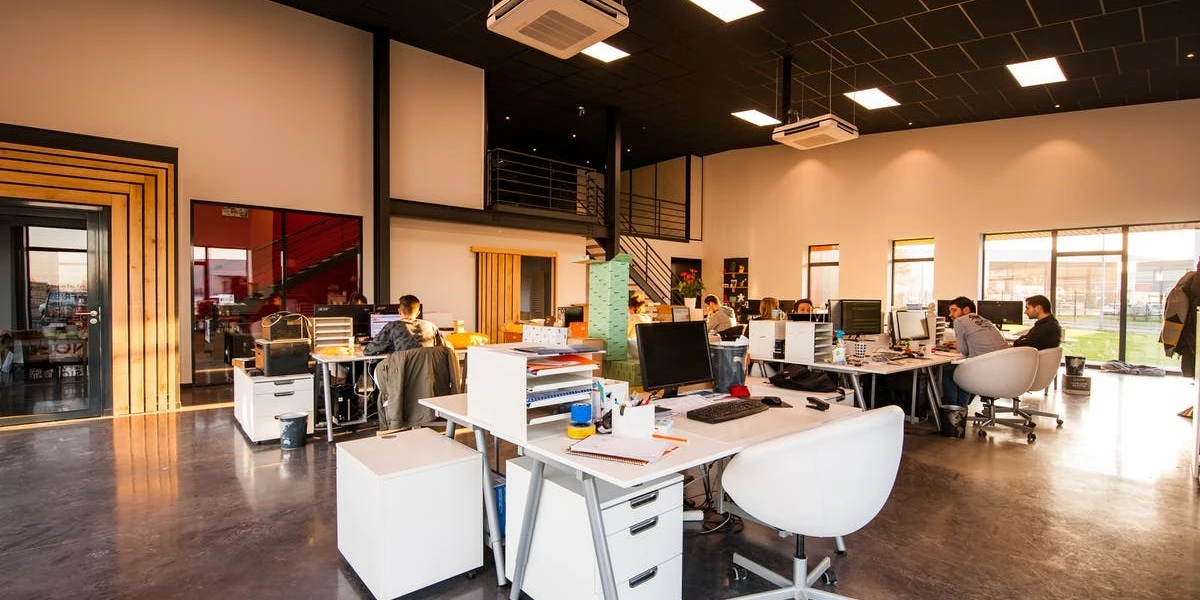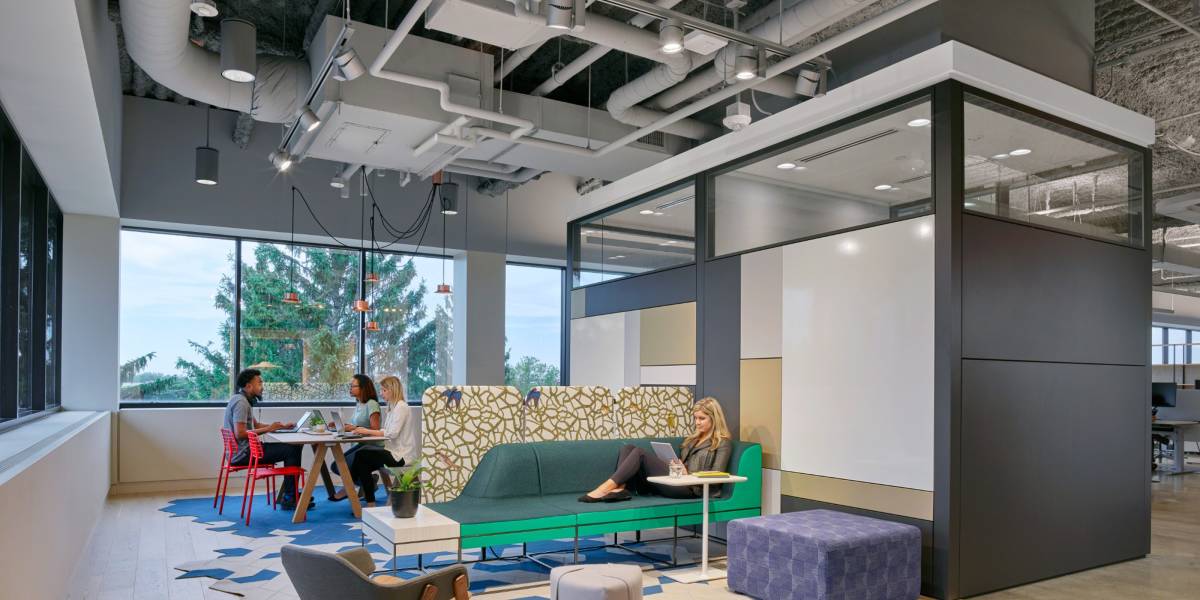Technological advancements and changing employee expectations have gained prominence in the debate between remote work and traditional office spaces. Which approach is best for your modern business? This article will delve into the pros and cons of remote work and conventional office spaces to help you make an informed decision.
The way we work has come a long way from the traditional 9-to-5 office model. Modern businesses are exploring new ways to boost productivity, enhance employee satisfaction, and stay competitive in a globalized world. Two prominent options are remote work and traditional office spaces. Let’s explore the pros and cons of each.
Flexibility and Work-Life Balance
Pros: Remote work allows employees to set their schedules and work from the comfort of their homes. This can improve work-life balance, reduce commuting stress, and increase job satisfaction & 오피사이트 순위.
Cons: On the flip side, this flexibility can sometimes blur the boundaries between work and personal life, making it challenging to disconnect from work-related tasks.
Cost Savings
Pros: Embracing remote work can lead to significant cost savings for businesses. With fewer employees in the office, there’s a reduced need for office space, utilities, and maintenance.
Cons: However, remote work may require investments in technology, cybersecurity, and remote collaboration tools, which can offset some cost savings.
Productivity and Efficiency
Pros: Remote work can boost productivity for some employees, as they have the freedom to create a work environment that suits them best. Fewer office distractions can lead to focused work.
Cons: On the other hand, some employees may struggle with distractions at home, leading to decreased productivity. Additionally, more face-to-face supervision can be needed for managers.
Communication and Collaboration
Pros: Traditional office spaces excel in facilitating real-time communication and spontaneous collaboration. Being in the same physical area can lead to quicker decision-making and problem-solving.
Cons: Remote work relies heavily on digital communication tools, sometimes leading to misunderstandings or miscommunication. Building a solid team dynamic may also be more challenging.
Company Culture
Pros: Office spaces often foster a sense of belonging and company culture. Employees can bond, share experiences, and develop strong relationships with colleagues.
Cons: Remote work can make cultivating a cohesive company culture challenging. Building trust and camaraderie among team members may require extra effort.
Employee Well-being
Pros: Remote work can improve employee well-being by reducing commute times, allowing for more family time, and providing a comfortable work environment.
Cons: However, remote work can also lead to feelings of isolation and loneliness for some employees, impacting their mental health.
Security and Data Privacy
Pros: Office spaces provide a controlled environment for data security, reducing the risk of data breaches. Companies can implement strict security measures within the office.
Cons: Remote work introduces cybersecurity risks as employees access company data from various locations. Ensuring data privacy and security becomes a more complex challenge.
Environmental Impact
Pros: Remote work can reduce the carbon footprint associated with commuting and office operations, contributing to a more eco-friendly approach.
Cons: However, the increased reliance on home offices and technology can lead to higher energy consumption at individual homes, potentially offsetting these environmental gains.
The Future of Office Sites: Adapting to Changing Work Trends
As we move forward into an era where adaptability is paramount, understanding and embracing the changing work trends becomes imperative for businesses to thrive. In this article, we will explore the future of office sites and how they are evolving to cater to the shifting needs of the workforce.

The Agile Workspace Revolution
Gone are the days of rigid cubicles and stationary workstations. The modern workplace is becoming increasingly agile. This evolution is driven by the realization that a one-size-fits-all approach no longer suffices. Companies are recognizing the importance of providing a variety of spaces to accommodate different work styles and preferences.
Flexible Office Design: Catering to Diverse Needs
Flexibility is the key to the future of office sites. From open-plan areas that foster collaboration to quiet zones for focused tasks, offices are now designed with versatility in mind. This adaptability not only enhances employee satisfaction but also boosts productivity.
The Rise of Remote Work
The COVID-19 pandemic accelerated the adoption of remote work, and its impact will continue to shape the future of office spaces. Companies are embracing hybrid work models that allow employees to work from home or come into the office as needed. This trend emphasizes the need for offices to provide an exceptional in-person experience that complements remote work.
Technology Integration: Smart Workspaces
Technology is at the forefront of the modern office revolution. Innovative workspaces with IoT devices and advanced communication tools are becoming the norm. These innovations enhance efficiency, streamline processes, and facilitate seamless collaboration.
Sustainable and Eco-Friendly Offices
As environmental consciousness grows, businesses increasingly focus on creating sustainable, eco-friendly office spaces. Green initiatives, such as energy-efficient lighting, recycling programs, and using renewable materials, are environmentally responsible and attract employees who value sustainability.
Wellness-Centric Workspaces
The health and well-being of employees have taken centre stage. Forward-thinking companies are incorporating wellness-centric features into their office designs. These include ergonomic furniture, fitness facilities, and spaces that promote mental well-being, such as meditation rooms.
Embracing Diversity and Inclusion
Diversity and inclusion are not just buzzwords; they are integral to the future of office sites. Businesses strive to create environments that celebrate diversity and ensure all employees feel valued and included. This not only fosters creativity but also strengthens a company’s reputation.
The future of office sites is a landscape of adaptability and innovation. Embracing changing work trends, such as agile workspaces, remote work integration, technology advancements, sustainability, wellness, and diversity, is essential for businesses aiming to thrive in this new era. By staying ahead of the curve and prioritizing the evolving needs of the workforce, companies can create office spaces that inspire productivity, collaboration, and employee satisfaction.
Innovative Office Design: Maximizing Space Efficiency and Employee Comfort
An innovative office design is one of the key drivers behind achieving these goals. This article delves into the strategies for maximizing space efficiency and ensuring employee comfort through cutting-edge office design solutions.
Creating a Functional Workspace
A well-designed office space is like a symphony; every element should harmonize seamlessly. To achieve this, consider these vital aspects:
Open Layouts for Enhanced Collaboration
Open floor plans have recently gained immense popularity for fostering collaboration and teamwork. They eliminate physical barriers, making it easier for employees to communicate and share ideas. The open layout encourages a sense of unity and a free exchange of information.
Ergonomic Furniture for Employee Well-being
Investing in ergonomic office furniture is a must. Chairs, desks, and workstations should support proper posture and reduce physical strain. An ergonomic setup not only boosts comfort but also reduces the risk of workplace injuries.
Utilize Natural Light
A well-lit workspace is essential for maintaining a productive and cheerful atmosphere. Incorporating ample natural light reduces energy costs and enhances mood and energy levels among employees. Large windows and skylights can make a significant difference.
Maximizing Space Efficiency
Space efficiency is crucial in office design, directly impacting cost-effectiveness and functionality. Here’s how to make the most of your available space:
Smart Storage Solutions
Innovative storage solutions, such as vertical shelving, compact cabinets, and under-desk organizers, can help DE clutter the office and maximize usable space. Efficient storage contributes to a clean and organized work environment.
Flexible Workstations
Adopting a flexible approach to workstations allows for efficient space utilization. Hot-desking and shared workspaces enable companies to accommodate more employees in a smaller area, reducing the need for excessive square footage.
Multi-Functional Furniture
Choose furniture that serves multiple purposes. For example, collapsible tables and chairs can be stored away when not in use, freeing up valuable space for various activities or meetings.
Prioritizing Employee Comfort
Employee comfort should be at the forefront of your office design strategy. A content and comfortable workforce is a productive one. Here’s how to prioritize their well-being:
Temperature and Air Quality Control
Maintaining an optimal temperature and air quality is essential for employee comfort. Invest in a reliable HVAC system and ensure proper ventilation to create a pleasant working environment.
Quiet Zones for Focus
Not all tasks require a collaborative setting. Designate quiet zones where employees can work without distractions. These spaces are ideal for jobs that demand concentration and focus.

Breakout Areas and Relaxation Zones
Dedicated breakout areas and relaxation zones allow employees to take short breaks, recharge, and socialize. These spaces contribute to reduced stress levels and increased overall job satisfaction.
Innovative office design is a powerful tool for companies looking to enhance space efficiency and employee comfort. Businesses can create an environment that promotes productivity and creativity by focusing on open layouts, ergonomic solutions, and maximizing space utilization. Prioritizing employee comfort through temperature control, quiet zones, and relaxation areas further solidifies the positive impact of a well-designed office space. Remember, a thoughtful office design isn’t just about aesthetics; it’s about creating an atmosphere where employees and the company thrive.
Conclusion – Office Spaces
There is no one-size-fits-all answer in the ongoing debate between remote work and traditional office spaces. The best approach for your modern business depends on various factors, including industry, company culture, and employee preferences. By weighing the pros and cons of each option, you can make an informed decision that aligns with your business goals and values.

